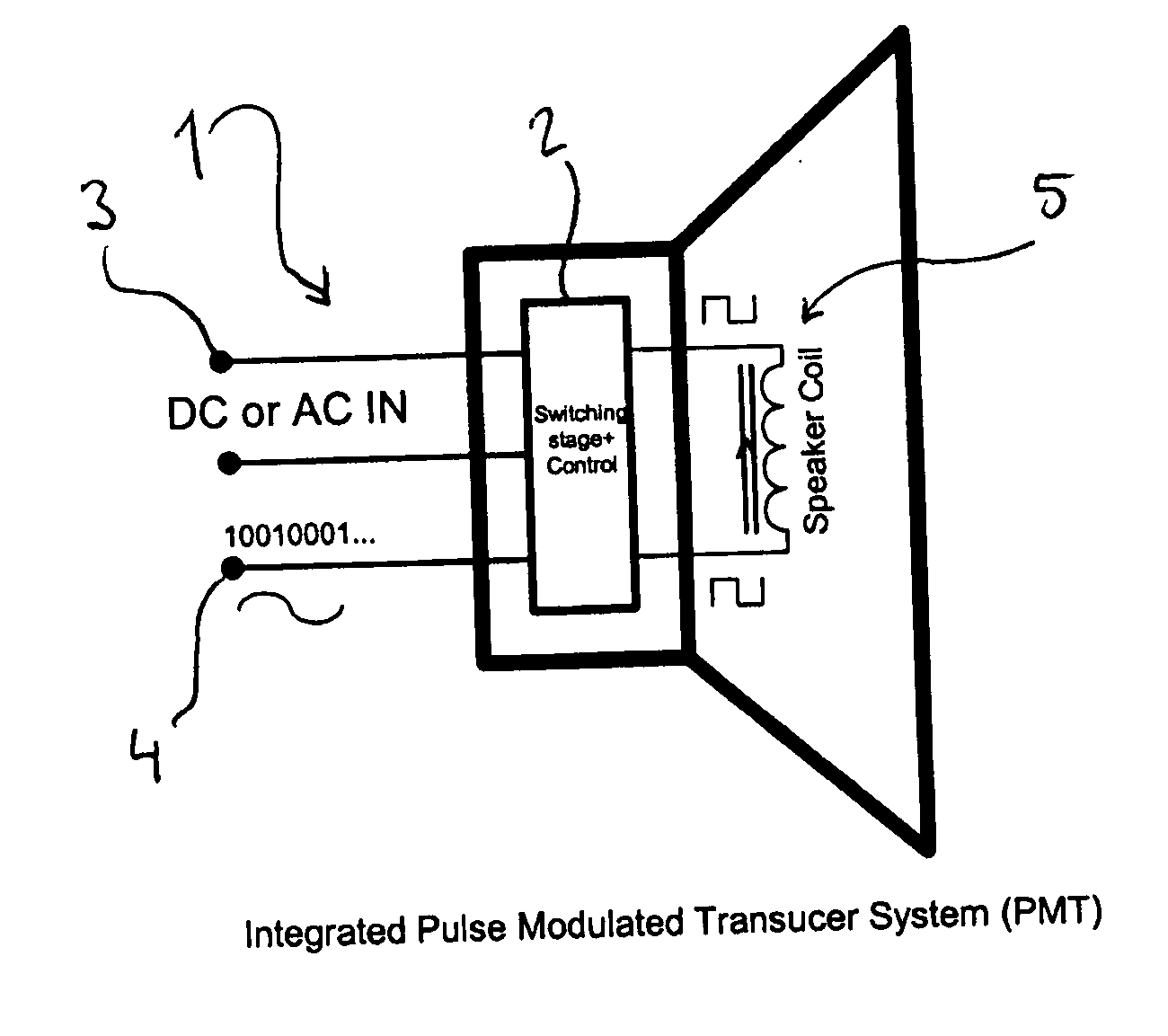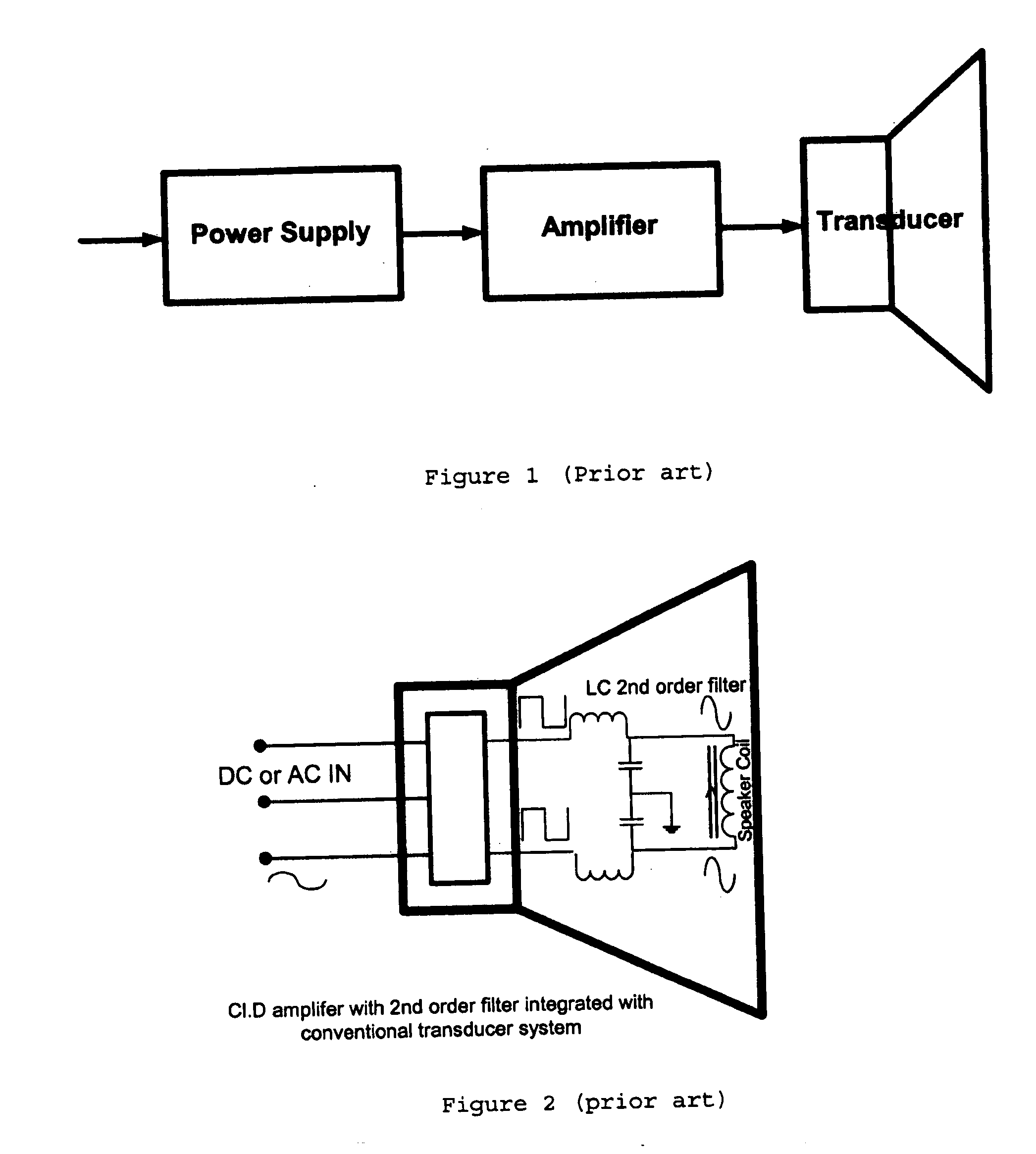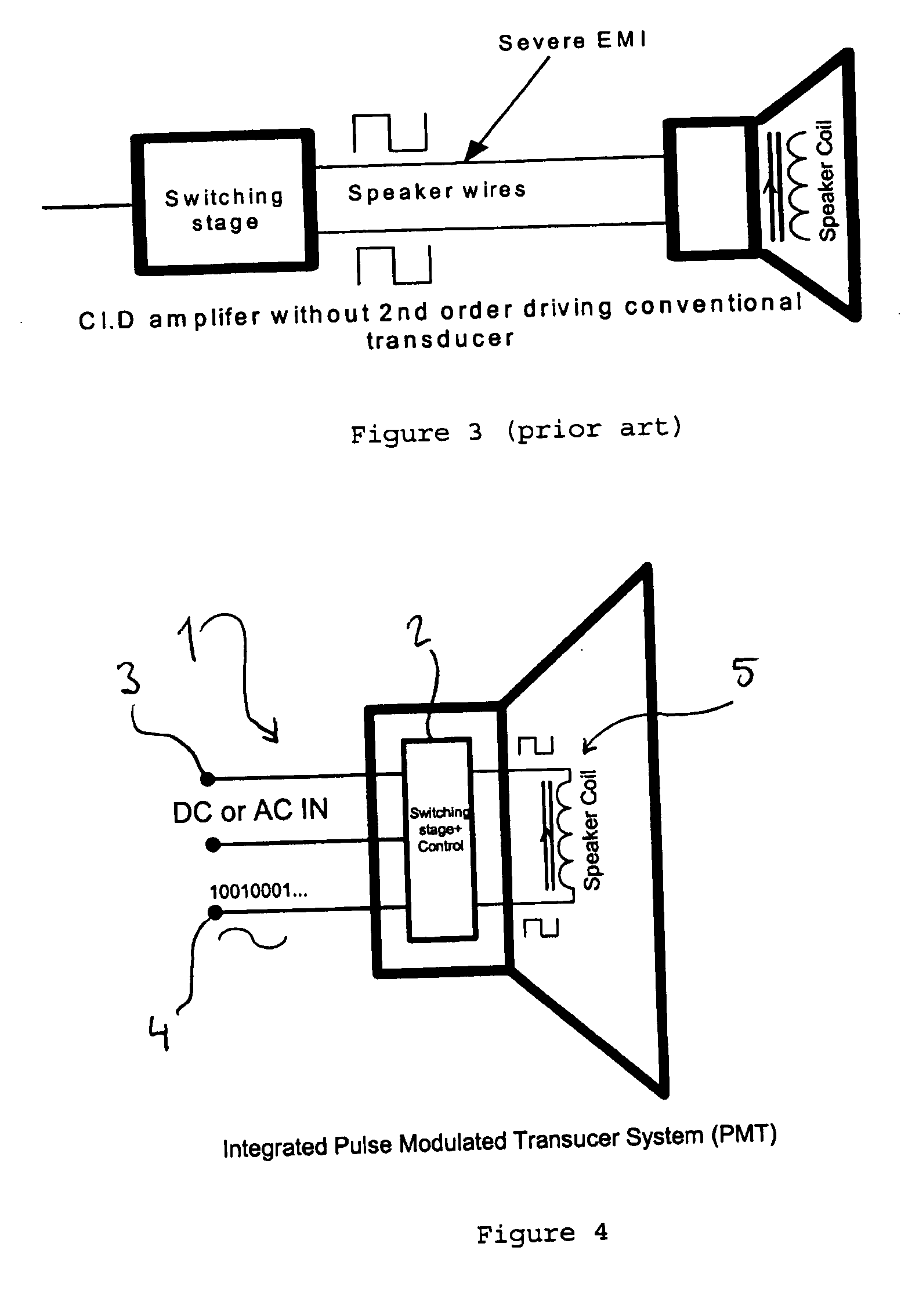Apparatus for electric to acoustic conversion
a technology of electric to acoustic conversion and amplifier, applied in the direction of electrical apparatus, transmission, amplifier, etc., can solve the problems of increasing output impedance, complicated amplifier design, and more complex implementation than actually needed, so as to minimize high frequency losses, high efficiency, and high efficiency
- Summary
- Abstract
- Description
- Claims
- Application Information
AI Technical Summary
Benefits of technology
Problems solved by technology
Method used
Image
Examples
Embodiment Construction
[0046] A schematic view of a Pulse Modulated Transducer 1 according to an embodiment of the invention is illustrated in FIG. 4. The power conversion can be implemented in a single conversion stage 2, switching directly from the rectified mains 3.
[0047] General to all preferred embodiments is that the modulator may be analog or digital and of PWM or PDM type in general. A "Controlled Oscillation modulator" can referably produce the pulse waveform as described in the applicant's patent number U.S. Pat. No. 6,362,702 or a synchronized Controlled Oscillation Modulator preferably producing a 3-level (Class BD type) PWM pulse waveform or a digital PWM modulator in general producing such a signal. This implementation will lead to lower losses in the voice-coil and magnetic structure of the electro-dynamic transducer. The modulating signal will be based on the source input 4 (analog or digital) and possibly also processed feedback information. Many feedback principles are viable in the PMT ...
PUM
 Login to View More
Login to View More Abstract
Description
Claims
Application Information
 Login to View More
Login to View More - R&D
- Intellectual Property
- Life Sciences
- Materials
- Tech Scout
- Unparalleled Data Quality
- Higher Quality Content
- 60% Fewer Hallucinations
Browse by: Latest US Patents, China's latest patents, Technical Efficacy Thesaurus, Application Domain, Technology Topic, Popular Technical Reports.
© 2025 PatSnap. All rights reserved.Legal|Privacy policy|Modern Slavery Act Transparency Statement|Sitemap|About US| Contact US: help@patsnap.com



